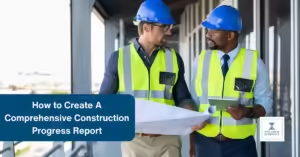Managing construction projects is not as simple as delegating tasks and monitoring the crew. Being a project manager means having the strategic mindset to plan ahead, the patience to deal with issues, and the skills to build relationships. In fact, it’s a taxing, intricate, and integral part of the whole construction process.
Construction, in general, involves so many people, not just the workers and contractors. A lot of people neglect to consider that construction projects heavily rely on outside forces, particularly vendors.
Most of the time, vendor managers take on the responsibility of handling vendor relations. But in some cases, this is a part of the project manager’s duties.
That being said, project managers can have their plates full. To help you stay on top of things, specifically with vendor relations, we’re here to give you some tips on improving vendor management.
What is vendor management?
In essence, vendors are considered to be individuals and businesses that provide services and goods to an organization. There is no rule on how many a project would need. Sometimes, a company could work with a few dozen. Other times, a project would engage with hundreds of different ones, all with varying terms of the contract, points of contact, and pay rates. (With a larger number of vendors, a construction scheduling software is a handy tool to use).
There are many vendors in the construction industry– from concrete suppliers to machine rentals, from timber providers to transportation. Contractors and workers are also considered as they offer services and skills.
Many business owners think that vendor management is merely seeking suppliers who provide goods and services at the lowest price. However, this is not the case. This more about managing vendor relationships and making an efficient system that ensures both parties benefit from the agreements.
With that, vendor management is the term used to describe tasks and activities related to dealing with vendors. These include:
● Researching and sourcing;
● Obtaining quotes with pricing; quality of work, turnaround times, and capabilities;
● Managing connections and relationships;
● Negotiating contracts;
● Assigning tasks;
● Evaluating performances; and
● Giving the payments.
As with any management job, this requires a lot of time, resources, and skills. As a matter of fact, vendor management is a significant factor that will affect the project’s lifecycle. An effective vendor management process can aid you in establishing cost, service, and quality goals. You can also choose and manage third-party suppliers that help in achieving these goals.
Four Steps Of Vendor Management
Business goals establishment.
Before anything else, you must establish your business goals: cost, service, and quality. Choosing vendors will be easier, but you will also be able to pick those best suited for your project if you have clearly defined performance parameters. These will help you compare and contrast your options.
1. Selection of vendors
After you’ve determined your business goals, it’s time to select your vendors. With the criterion you set, you’ll be able to choose vendors who are best suited for the project. If things go well, they may be the “go-to” of the company or for your future projects.
But remember, there is no perfect vendor. Each has its strengths and weaknesses, and it’s up to you to decide who can optimize operational results
2. Managing suppliers
Now that you have your team of vendors, it’s time to manage them. They will need daily:
● Monitoring of performance and output;
● Approval or disapproval of changes;
● Assurance that contract terms are followed; and
● Feedback.
More than that, you should create good relationships with them. Through integrity, honesty, respect, and communication, you can develop these. This is vital as creating alliances and relationships with vendors will prove beneficial in the long-run, not just for one-off projects.
3. Consistently meeting goals
Last but not least, you should consistently be meeting goals. This part requires you to continually be influencing the vendors to meet performance objectives to achieve profitability.
But as with anything in construction, not everything will go as planned, so expect delays and issues. On your part, you should be able to work through them and still achieve these goals.
Tips On Improving Vendor Management
4. Use an improved vendor onboarding process.
When working with a new vendor, they’ll usually learn your expectations through trial and error. However, there is a better way you can guide them– an onboarding process that requires the following information:
Tips On Improving Vendor Management
1. Use an improved vendor onboarding process
When working with a new vendor, they’ll usually learn your expectations through trial and error. However, there is a better way you can guide them– an onboarding process that requires the following information:
Contacts
It’s best to identify your primary contact and have a backup contact as an alternate in case the first is unavailable.
Vendor Reports
While not mandatory, vendor reports are useful in monitoring. If the contract requires them, clearly explain how the vendors should deliver them.
System Access
When you ask the vendors to hop on your project management platform, get all the necessary information to get them set up on it.
Security Access
Security is essential in construction sites. So, ask the vendors to make you a list of personnel who would need site access so you can arrange that for them.
Communication
Give an overview of your preferred communication system for them.
2. Define scope clearly
The lack of a clear and concise scope of work is one of the biggest problems on a project site. Most of the time, the peripheral items cause the issues. For building construction, plumbing and drywall are pretty clear to understand. But what about the small things, like building permit application, fire inspections, and landscaping?
When you’ve clearly defined the work scope, all other tasks and responsibilities will go ahead smoothly. Moreover, the client should also offer some effort on their end. The more, the better.
3. Divide the project into phases
Practically speaking, dividing the project into stages will improve quality. On your end, you can evaluate each stage and fix any problems before proceeding. Then, replace those who aren’t performing up to par in the next phase. On the part of the vendors, they can focus on one stage and produce quality results. Plus, this strategy motivates them to complete a stage to “earn” the next.
4. Dig a little deeper
You can’t just get the first ones who come with a decent proposal in the vendor selection process. You have to do your research. If you don’t do your due diligence, this could hurt you and the project in the long run. You might find that they are not the best for the project. By then, it will be too late.
When a vendor gives you a cost estimate, ask for:
● A work breakdown structure;
● Multiple prices or bids; and
● A review from a technical expert.
5. Develop strong relationships
Alliances and relationships are fundamental in the construction industry. Having reliable and skilled vendors to work for and support you can reduce downtime and the risk of problems.
A strong relationship with you will motivate the vendors to give their best on- and offsite. Seeing future work with you lets them correct small mistakes quickly and accept some negative situations.
More than that, when you have the same team on different projects, they can work like a well-oiled machine. They can get accustomed to each other’s attitudes and work styles, ensuring outstanding results. So, think of vendors as partners and not one-off service providers.
6. Integrate vendor personnel into your teams
This tip is connected with the previous, develop healthy relationships. When it’s possible, form teams that integrate vendors with your personnel. Doing this can create better working relationships among the workers. Plus, a culture clash between the two parties can be minimized, as well as project risk.
7. Gather vendor data for financial plans
One of the biggest expenses in the construction budget tends to be vendor-related costs. As part of the regular (annual or semi-annual) benchmarking exercise, gather vendor costs data. This will well you see identify if the value and pricing are reasonable and acceptable.
There are ways to do this. One is to look at the most important item the vendor offers. Vendors tend to supply several items. Focus on one at a time to simplify your analysis. Then, ask for their pricing structure.
You should also for any discount opportunities. For large volume orders, some vendors offer a percentage discount. When they do, take note of this. You can then compare these to the others that have also offered deals.
Lastly, get information on Service Standards and Guarantees. This information can be tough to analyze in a spreadsheet, but it can prove a critical record.
8. Evaluate vendor performance
Invest time in periodically checking up on your vendors to measure their performance. This is to identify if they have any problems or issues that can be fixed early on.
When conducting vendor evaluations, look at these factors:
● Operations
● Safety;
● Customer Service; and
● Change Requests.
You can use scorecards to records these evaluations. Then, send them to several significant people on your team for additional analyses.
9. Use project management software.
When working with a relatively large team, it’s good to have project management software. You can monitor virtually every aspect of the project– from employee hours to material management, from project progress to vendor performance.
When you have a tool that can keep you organized, you’ll increase efficiency and improve productivity.







